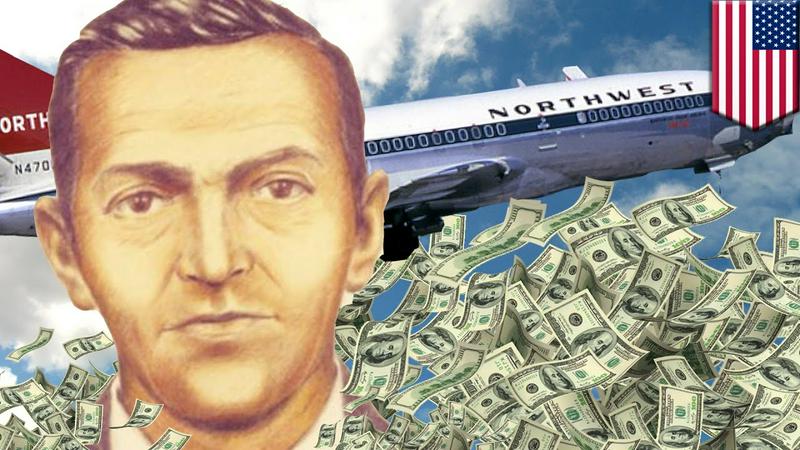The Disappearance of D.B. Cooper
By | June 14, 2019

One of the longest manhunts in FBI history was for a man by the alias of Dan Cooper, later referred to as D.B. Cooper. After hijacking a plane and parachuting out with the ransom money, he disappeared and was never seen or heard from again.
It began on the afternoon of November 24, 1971, when an ordinary-looking man who called himself Dan Cooper purchased a one-way ticket for flight 305 from Portland, Oregon, to Seattle, Washington. The man was described as being in his mid-40s, about six feet tall and 170 pounds. He wore a dark suit with a white shirt, black tie, and sunglasses, and drank bourbon and soda while waiting for the flight to take off.

Everything was business as usual until he handed the flight attendant a note demanding $200,000 and telling her to sit with him. The flight attendant sat down, and the man opened his briefcase to show her that it contained red cylinders, wires, and a battery. He told her it was a bomb and sent her to the cockpit with his ransom demands. He wanted the money in twenty-dollar bills and four parachutes. The pilot, William Scott, contacted Seattle-Tacoma Airport air traffic control and informed them of the situation and they contacted the local police and FBI.

When the plane landed in Seattle, Cooper released the thirty-six passengers and two flight attendants in exchange for the money and parachutes. However, he ordered the two pilots, a flight engineer, and one flight attendant to stay on the plane. On his orders, the plane was refueled and took off for Mexico City. Per his instructions, the pilots kept the plane at a low speed and an altitude of no more than 10,000 feet. Cooper locked up the crew members and remained in the cabin alone.

When the plane stopped in Reno, Nevada to refuel, Cooper, the briefcase, the money, and two parachutes were gone. It was determined that Cooper jumped out of the plane sometime around 8 pm, likely near Ariel, Washington. The FBI immediately launched an exhaustive investigation called NORJAK, for Northwest Hijacking, which would last decades. Within five years, they had considered more than 800 suspects. It was initially believed that Cooper escaped because he was an experienced jumper and knew the area; however, he failed to notice that the parachutes were sewn closed and he jumped on a dark stormy night when the chances of survival were slim.

One of the suspects was a man by the name of Richard Floyd McCoy who was arrested less than five months later for a similar hijacking. He was eliminated, however, because he did not match the physical description given by the flight attendants and because he had an alibi. Another suspect, Duane Weber, confessed to the crime on his deathbed but was ruled out because his DNA did not match the samples recovered from the plane. The only other evidence recovered were instructions for lowering the aft stairs of a Boeing 727, the type of plane from which Cooper jumped, and a package full of $5,800 in twenty-dollar bills which matched the serial numbers of the ransom money.
The general conclusion is that the man who called himself Cooper did not survive the jump. Given the weather conditions and lack of survival equipment, even a professional jumper would have only a small chance at survival. In July of 2016, the FBI officially closed the 44-year investigation due to lack of evidence.

